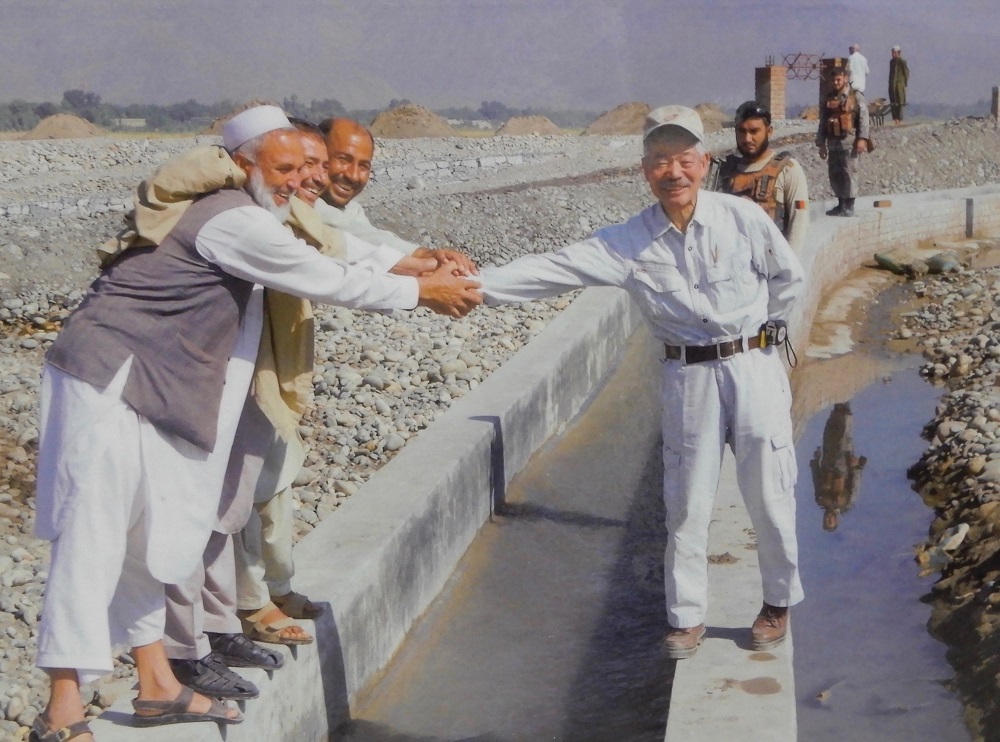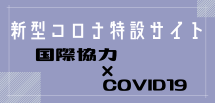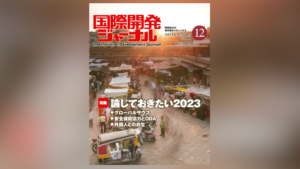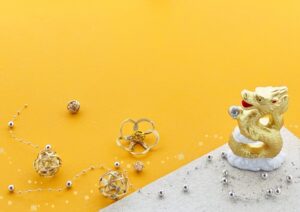【IDJ-English】Medical Doctor in active duty at the age of 101
Medical Doctor in active duty at the age of 101
A man of passion, admired in Nepal as Father of Obstetrics and Gynecology
This year (2023) he has come to the age of 101 (one hundred and one).Has he retired? Absolutely not. Twice a week, he commutes from his home to his work by trains, which takes him two hours one-way: his work is an outpatient doctor in Obstetrics and Gynecology in Josai Hospital (Ibaraki prefecture) and teaching in Saitama Medical University Hospital (Saitama prefecture). It is not all. He goes to Tokyo Medical University Pathological and Microscopic Laboratory once a week for his own research and study. His long life has been filled with truly remarkable events: the misery and tragedy at the time of the war, the earnest devotion to the study of placenta and the dedicated medical aid to Nepal.
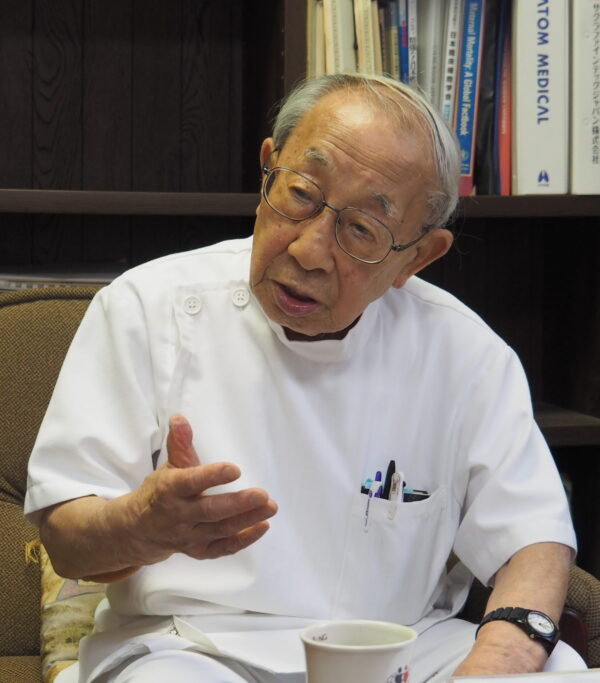
Dr. Soma Hiroaki
Professor Emeritus of Tokyo Medical University
【Profile】
Born in Abashiri, Hokkaido. After he entered Faculty of Science, Keijo Imperial University in 1940, he made progress to Faculty of Medicine in the same university. After the war, he was transferred to Faculty of Medicine, Kyushu University, and then he acted as an internship in National Fukuyama Hospital; thereafter, he entered Department of Pathology in Faculty of Medicine, Tottori University. Then, after working in Obstetrics and Gynecology department of Tokyo Medical University, he served as Research Fellow at Boston Lying-in Hospital, Pathological Department, and was invited to Dartmouth Medical School as Visiting Professor. In 1978, he started the medical consultation to mothers and children in Nepal as well as the research on placenta. In 1992, Order of Gurkha was bestowed to him by King of Nepal. He is now Visiting Professor of Saitama Medical University Hospital and Honorory Director of Josai Hospital in addition to the position of Professor Emeritus of Tokyo Medical University.
Dreamed of becoming a medical doctor in a city of extreme cold
Soma grew up in Abashiri city, which is located in Hokkaido where the winter is extremely cold and trying. In winter, the Okhotsk Sea in front of him was fully packed with drifting ice. In 1936 when Soma was a junior high-school student, Professor Strutton, Cambridge University (astrophysics) in England, came there in order to observe the total eclipse of the sun. Professor Strutton made a special lecture in Abashiri middle school. His speech was in English and delivered to the audience through a translator. It was an impressive speech but what Soma really felt was the dire necessity of the knowledge of languages. He thought that he must possess the sufficient knowledge of languages in order to understand the different cultures. Therefore, until now, he has been learning English, German, Spanish, Russian, Nepali and Korean, even though, he says, not so enough for extreme examinations.
Keijo Imperial University and the end of war
Graduating from Abashiri junior high school in 1940, Soma travelled from Abashiri to Seoul via two channels. He entered Faculty of Science (Category B), Keijo Imperial University. In those days, there were only two universities which offered the study of Mongolia: Kyoto National University and Keijo Imperial University. The latter was more attractive to Soma in view of lower tuition fee. Amount of fee mattered to him because he could not expect the financial support from the parents as both of them had already been dead. In 1942, Soma moved to Faculty of Medicine in the same university. All those years, he always dreamed of visiting Mongolia. The opportunity finally came when he joined the Keijo Imperial University’s academic research team to Gobi Desert area. The team leader was Professor Izumi Seiichi (later the chief of Tokyo University Oriental Culture Research Centre). During the research activity with Professor Izumi in Mongolia in the following year, Soma met the end of the war. He suspended the research and returned as far as to Beijing where he found that all the trains were crammed full of soldiers and people so there was no space at all. But his group was fortunate enough to finally find vacancy in the ambulance train and managed to reach Seoul. He was exasperated to see that so many people were tragically wounded or killed by the war.
Engaged in medical treatment of war sufferers
When the war was over, people who had been living in northern Korea and Manchuria were coming back to Seoul, and the staff members and the university students started returning to Japan. But Soma had no place to return. So, he stayed on to give medical treatment to the war sufferers together with the other medical staff members of the university. In the end of 1945, Soma took up a duty to transfer the sick and wounded Japanese refugees to Pusan on the ambulance train. Most of the express trains took 5 hours from Seoul to Pusan but the ambulance train, full of the sick and wounded, took one full day. Soma kept close observation of the conditions of more than 100 sufferers in the darkness which was only lit by candle flames. During the trip, one baby fell into dyspnea (difficulty in breathing) but Soma’s competent treatment successfully brought the baby to full recovery. Soma took care of all the sufferers well and they finally reached Pusan without any loss. Soma remembers that he, at that time, was driven by the sense of duty as a medical man who had to save the sufferers in front of him, and also by the flaming love to the fellow countrymen.
In 1946, Soma entered Faculty of Medicine, Kyushu University. After the graduation, he came to Fukuyama city (Hiroshima prefecture). He lived in the Fukuyama Hospital’s premises and worked as an unpaid intern. He gathered a lot of experiences there. After a time, he passed the state examination and obtained the medical license. Obstetrics and gynecology department was newly created in Fukuyama Hospital and Dr Soma began his career as an obstetrics and gynecology doctor. In 1949, Dr Soma became Assistant Pathologist in Faculty of Medicine, Tottori University. In 1957, he became Lecturer at Tokyo Medical University. When asked about the core of his philosophy as a medical doctor, Dr Soma answers without hesitation that it is the service to the new life.
Study of placenta is his lifework
Louis Pasteur (a French bacteriologist) said “Chance favours the prepared mind.”
It is the motto of Dr Soma; he says, “science may go along with chance, but we can never grasp it without piling up of daily effort”.
When Dr Soma was in the middle of his 30’s, he came across the book “Gynecologic and Obstetric Pathology” written by Professor Novak of John Hopkins University. This book impressed him of the great progress of American medicine so much that Dr Soma laboriously hand-copied all the pages of the book. In Tokyo Medical University, Dr Soma was in charge of the patients with metastasis of trophoblastic disease attributable to placenta. He noticed the high mortality rate of the patients with metastatic choriocarcinoma and felt the urging necessity to study more in America. In 1959, Dr Soma wrote to Professor Hertig of Pathology, Harvard Medical School, on his wish to study more about trophoblast. He received a telegram from Dr Benirschke of Boston Lying-in Hospital, who was the authority on placenta, saying that he should come at once.
Dr Soma went to Harvard University as the researcher and received the direct education and guidance from Dr Benirschke. He later became Professor in Faculty of Medicine, Dartmouth University and US San Diego Medical School as well as the creator of San Diego Zoo; and he left great achievements on the study of genetics and wrote many books on placenta. As Dr Soma observed Dr Benirschke closely beside him, Dr Soma came to believe that “the study of placenta is the subject, to which I shall dedicate my life”.
Transcending the boundaries
One important thing that Dr Soma learned from Dr Benirschke is the philosophy of “One Medicine”, which emphasizes that medicine should be beneficial not only for humans but for all the creatures on earth. Dr Soma appreciated the importance of “Frozen Zoo” in which the cells of the endangered species were preserved. About this time, Dr Soma started the study of pedigree chart of antelope. “The studies of placenta and chromosome of various creatures will definitely contribute to the development of obstetrics and gynecology for human” is his belief.
He has travelled in and out of Japan. He looked into the cause of death of Giant Panda in Ueno Zoo. He helped the childbirth of an African elephant. Recently, he published a book “Fellow Animals in the Frozen Zoo”, the book to introduce his own history of research and study in the style of a travel journal. His recent interest is in the sea creatures like sharks which have placenta. “Placenta is amazing. Its function is biologically reasonable, and the research is really interesting. I am infinitely fascinated. I have studied so much but there are still so many unknown elements. It is important to work basing on the philosophy of “One Medicine”, in which we transcend all the frameworks and boundaries of specialization”, says he. Dr Soma, in full enthusiasm and with endless inquisitive spirit, endeavours to look into the bottom of the secret of life.
Medicine for the Nepalese
Dr Soma first visited Nepal in 1978. He had read a report that people in Andes highland had large-size placenta but when they came down to lowland, their placenta became normal size. Dr Soma doubted it. In order to investigate it by himself, he went to Nepal, which is located in Himalaya being higher than Andes. While working in Maternity Hospital in Kathmandu, he was asked by Dr Malla (director of Maternity Hospital) to see patients. Dr Soma suddenly realized that there were many Nepalese who could not receive proper medical treatment because of poverty and that the mortality rate in the perinatal period (an indication to show the health conditions between younger mothers and premature infants) in Nepal was the highest in the world. There were no medical doctors in the rural area; there were only helpers instead of midwives. There was a medical institute called “Health Post”, but it did not even have a nurse. It means that practically no one could receive proper medical care in Nepal. Overwhelmed by the reality, Dr Soma decided to help the people in Nepal by establishing the proper medical services. Since then, he visited Nepal regularly to make sure that the proper medical care was given to the mothers and children as well as to do his own further research and study of placenta. All those visits to Nepal were managed by his own expense. Through his experiences, Dr Soma came to the idea that the development of medicine and the high standard of living must not be monopolized by the people in the advanced countries but must be shared with the people in other parts of the world.
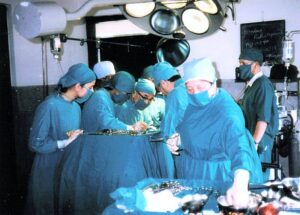
The Establishment of Nepal Society of Obstetrics and Gynecology
In Nepal, Dr Soma became Adviser to Maternity Hospital, and Professor in Faculty of Medicine, Tribhuvan University. He gave medical services in the rural villages, where there was no doctor. Dr Soma called out to the doctors in Nepal: “At present, there is not even a textbook on Obstetrics and Gynecology in Nepal. In order to raise the medical standard and to lower the perinatal mortality rate, we must train and grow the proper obstetricians and gynecologists. To achieve this purpose, we should create the Nepal Society of Obstetrics and Gynecology.” In response to his call, the society was established in 1989. It started with only 20 members but now it has more than 200 members. It has been accepted to join Asian Society of Obstetrics and Gynecology and has gradually been expanding the activity. When the members did not have the financial means to attend the conference abroad, Dr Soma solicited support from outside sources like Ikebukuro Rotary Club. His effort enabled the doctors, nurses, midwives and laboratory technicians of Nepal to come to Japan and to attend the international conferences. In 1992, in the appraisal of his achievement, Order of Gurkha was bestowed to Dr Soma by the King of Nepal. Dr Soma is admired and called Father of Obstetrics and Gynecology in Nepal and the bond between him and the medical workers in Nepal is very strong and everlasting.
International medical aid to other countries
Dr Soma’s involvement in the medical aid is not limited to Nepal. He is one of the directors in a public interest corporation “Japan International Friendship and Welfare Foundation” (abbreviated as JIFF). When JIFF opened “Clinic for Afghan refugees” in Peshawar, Pakistan in 1991, he was greatly involved. Located near the border, Peshawar was not a safe place. It was thought that terrorists were lurking there. The clinic was visited by so many patients everyday that the clinic workers did not have time to rest. It was a sad reality that there were many children suffering from malnutrition and congenital anomalies. In 2002, the clinic was moved to Kabul, Afghanistan and re-named “Clinic for Mothers and Children”. Dr Soma rode a bus from Peshawar to Kabur to attend the opening ceremony. He recollects the trip: “The road from Peshawar to Kabur was just terrible. The bus went up Khyber Pass, down the steep winding slope, and rolled into a dubious-looking place where Taliban might be lurking. The bus, which started early in the morning, finally arrived at Kabur very late at night. I was horrified by the sight of Kabur that I saw the next morning. The field was utterly destructed by the violent combat. But we opened the clinic and began the work.” This clinic still exists but is now managed only by the local people.
Opening ceremony of “Clinic for Mothers and Children at Kabul”
In 2005, JIFF started the support of the opium eradication project in Thailand called “Doitung Development Project”, which was initiated by Thai royal family. This project is being executed mainly in the mountain area of north Thailand, which was once notorious for opium growing. Dr Soma has visited those places including the malaria and tuberculosis patients in the countryside of Myanmar and given various guidance and advice to IIFF. The wide experience and deep knowledge that Dr Soma acquired in Nepal and other places are always precious and valuable and relevant in any international medical aid anywhere.
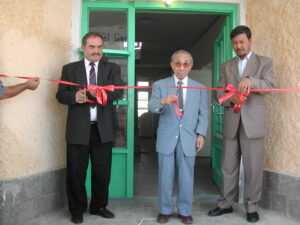
Editor’s note
When talking with Dr Soma, I never felt his age. He is always active, strong and passionate, and gave me interesting topics in a row. He says his hobby is reading books and placenta. “My present dream is to travel to Greenland to see the placenta of the shark which has been living 400 years,” says he with bright and youthful smile. His sincere attitude to look into the origin of life was impressive. His talk about the tragic experience at the time of the war was touching. He is of an exceptionally strong personality. With the belief that there is always a way in any difficult situation, he has cut open the way and has overcome all the raging waves of life. “There should be no border in science. When we have a subject to work on, our perspective must be broad and the frameworks and boundaries of specialization must be transcended.” Those who are involved in the international aid and cooperation should appreciate his words. (Kaneko Takashi)
“International Development Journal”, October edition, 2023
*****以下、日本語原文*****
百寿を超え、医療現場に立つ現役ドクター
ネパールで「産婦人科医療の父」と慕われる温情家
今年101歳を迎えた相馬廣明氏は、静かな隠居生活かと思いきや、週2日は外来診
療などを担当する産婦人科医だ。それも片道2時間かけて新幹線や電車を乗り継ぎ、
茨城県の城西病院と埼玉県の埼玉医大に通う。また週1日は名誉教授を務める
東京医大に出かけ、研究に当たる。戦争の悲惨さを体験し、ネパールなどの医療
支援に携わり、胎盤研究に挺身したその人生は、まさに波乱万丈だった
東京医科大学 名誉教授 相馬 廣明氏
【プロフィール】
北海道網走生まれ。1940年に京城帝国大学に入学、予科を経て医学部へ進む。終戦後、九州大学医学部へ転学し卒業。福山病院、鳥取大学医学部、東京医科大学産婦人科で経験を積み、1959年に米国ハーバード大学へ留学。1978年頃からネパールで母子医療と胎盤研究を始め、1992年に国王からグルカ勲章を受章。現在は、埼玉医科大学客員教授及び城西病院名誉院長も務める
厳冬の網走で育ち、医者を夢見る
流氷で埋め尽くされたオホーツク海を見て、厳寒の網走で育った相馬少年は、大草原が広がるモンゴルに憧れ、医師になることを夢見ていた。中学時代の1936 年、北海道での皆既日食観測のため、英国ケンブリッジ大学のストラットン教授(天体物理学者)が来日。そ折、網走中学校に来訪、英語講演を行ったが、通訳付きの興味深い話に触発された。その時、多様な文化に触れるには、外国語学習の重要性を実感し、「語学は絶対にやらなければいけない」と誓った。その後、濃淡はあるものの、英語、ドイツ語、スペイン語、ロシア語、ネパール語、韓国語などの学習に力を注いできた。
京城大学予科に進学し、終戦を迎える
1940 年に中学を卒業すると、海峡を2つ越えて日本統治下にあった京城(現在のソウル)帝国大学予科理科乙類に進む。当時、モンゴル研究をしている大学は、京都大学と京城大学(以下、城大)の2 校だけで、両親が他界した相馬氏には、学費の安い城大は大きな魅力だった。やがて医学部に進むが、いつかモンゴルの地を踏めることを願っていた。折しも、城大のゴビ砂漠周辺の学術調査隊に参加し、長年の夢を実現させた。その調査団長として泉靖一教授(のち東大東洋文化研究所長)がいた。翌年、泉教授に同行したモンゴルでの学術調査中に終戦を迎え、やむなく調査を中断し北京まで戻った。そこから先は、人が溢れ列車に乗れず窮地に立たされたが、運よく病人を運ぶ列車に乗ることができ、国境を越えてソウルにたどり着いた。戦争に翻弄され、傷つき、次々と失われていく命を目の当たりして、胸が痛む日々だった。
引揚者のための医療奉仕に従事
終戦後、京城は名称がソウルに変わり、北鮮からの日本人引揚者が集まってきた。大学関係者や学生たちも日本に帰還していくが、相馬青年には、帰る場所がなかったため、城大の先生たちと一緒に、引揚者の医療に奉仕しようと考えた。1945 年末、病人列車護送のため釜プサン山に向かった。急行列車では約5時間で着いたものが、引揚者で溢れる列車は一昼夜もかかった。相馬青年の役目は、ローソクの灯を頼りに、100 人を超える病人を独りで観察し、無事に釜山港へ運ぶことだった。途中では、呼吸困難になった赤ちゃんや重病患者を手当てし、一人も脱することなく目的地へ送還した。それは目の前で苦しむ病人を救う応急処置であり、使命感と同胞愛に基づく行動だった。
1946 年に九州大学医学部に転学。卒業後は、福山病院(広島県福山市)に住み込み、無給インターン生として経験を積む。その後、医師国家試験に合格し、医師免許を得る。福山病院に産婦人科が創設され、産婦人科医としての第一歩を踏み出す。1949
年に鳥取大学医学部病理助手に転属後、1957 年に東京医大講師となる。
相馬氏に医師の原点を尋ねると、「新しき生命への奉仕」と、躊躇なく答える。
米国留学で「胎盤研究こそ生涯のテーマ」と確信
ルイ・パスツール(フランスの細菌学者)の「偶然は用意ある心にのみ訪れる」という言葉が、座右の銘だ。「科学には偶然がつきまとうかも知れないが、普段の地道な努力の積み重ねがなければ、その偶然を拾い上げられない」と語る。
30 代半ばの相馬氏は、日比谷の「日米文化センター」で、ジョン・ホプキンス大学・ノバアク教授の著「産婦人科病理学」に触れ、米国医学の進歩に驚嘆。同センターに毎日通い詰め、その医書を書き写した。その後、東京医大産婦人科へ移り、胎児に起因する絨じゅうもう毛性疾患転移患者を担当するようになった。腫瘍胎盤に起因する転移での死亡率が高いことに胸を痛め、胎盤研究の必要性を痛感、渡米への思いを膨らませた。1959 年にハーバード大学のハアティグ教授に留学希望の旨を送ると、ボストン産科病院の病理主任ベネルシュケ助教授から、「すぐに来られたし」との電報が届いた。
程なくして、ハーバード大学医学部に留学、研究員となり、胎盤の権威であるベネルシュケ助教授から、直接指導を受けることになった。同助教授は、のちにダートマス大学医学教授となり、動物の染色体や遺伝の研究など、さまざまな角度から研究を重ね、胎盤学の執筆に力を入れていた。相馬氏は恩師の研究に感化され、「胎盤研究こそ、生涯をかけて取り組むべきテーマだ」と確信する。
専門領域を越え「One Medicine(一つの医学)」を
医学はヒトのためだけでなく、地球上のあらゆる生物にためになくてはならないという「One Medicine」の理念を、ベネルシュケ教授から学んだ。絶滅の危機に瀕する野生動物の細胞を保存した「冷凍動物園」の重要性にも共感。相馬氏がカモシカの系統研究を始めたのもこの頃。「さまざまな動物の胎盤や染色体を研究することで、産婦人科医療の発展にも寄与できる」と信じて、国内外を歩き回った。
上野のパンダの死因を調べたり、アフリカ象の出産を手伝ったりしたことなど、研究足跡を紀行文風に紹介した書籍「冷凍動物園の仲間たち」を発行している。最近は、胎盤を持つサメなど海の生物の研究にも向かっており、「胎盤はすごい。実に理にかなっており、研究はすごく面白い。これだけ研究してもまだまだ分からないことが多い。そのため、専門領域を越えた『One Medicine』の考え方が重要だ」と、飽くなき探求心を持って、生命の基を見極めようと情熱を燃やす。
ネパールの貧しい人びとに届く医療を
1978 年に、ネパールの地を初めて訪れた。この頃、「アンデス高地住民は大きな胎盤を持つが、低地に下ると通常の胎盤を生じる」という論文を目にし、これはおかしいと疑念を持った相馬氏は、アンデスより高いヒマラヤ住民の胎盤を調べるため、ネパールに飛んだ。カトマンズのマタニティ病院で胎盤研究を続けるうちに、マラ院長から患者を診てくれと依頼があった。
そして、貧困のため満足な医療が受けられない人びとが大勢いること、周産期死亡率(母体と胎児の健康状態を反映する指標)が世界で最も高いことなどを知り、「医学の進歩や生活の豊かさを、われわれだけが満喫していてはいけない」と思うようになっ
た。地方に行けば医者がいない。“ヘルス・ポスト”という医療施設には看護師もいない。器具も何も揃っておらず、病気になっても医者にかかれないなど、劣悪な医療環境を見て、「ネパールの貧しい人びとのために」との思いが募り、母子医療と胎盤研究のため、私費により定期的にネパール訪問するきっかけとなった。
「ネパール産婦人科学会」設立を構想
相馬氏はマタニティ病院の顧問になり、トリプバン大学医学部の教授として講義も担当。また、無医村での診療にも当たった。「この国には、教科書もほとんどない状態だった。医療水準を向上させ、周産期死亡率を下げるためには、まず産婦人科医の育成が不可欠だと認識し、勉強しよう。そのために、学会をつくろう」と、女医さんたちに呼びかけた。
1989 年に、「ネパール産婦人科学会」が設立された。当初20 人しかいなかった会員も、現在では200 人を超え、アジア産婦人科学会への加入も認められ、活動範囲を広げてきた。外国の学会に出席するにも経済的余裕がなく、何らかの支援が必要だったため、池袋ロータリークラブなどからの支援を受けて、相馬氏は医師だけでなく、看護師や助産師、検査技師などを日本に呼んだり、国際学会への出席を援助したりした。これらの活動が評価され、1992 年に、ネパール国王からグルカ勲章を授与された。現地では、「ネパールの産婦人科医療の父」と慕われ、医療関係者の人たちとは強い絆で結ばれている。
アフガニスタンなどへの国際医療支援に尽力
相馬氏は、他国の医療支援にも携わってきた。理事を務める日本国際親善厚生財団(現・茨城国際親善厚生財団:通称IIFF) が、1991 年にパキスタンのペシャワールに開設した「アフガン難民診療所」への支援もその一つだ。国境の町ペシャワールは、車、馬車、ラクダが往来し、テロリストが潜む場所でもある。この診療所に毎日大勢の難民が受診に来た。栄養失調児や異常児が多く、診療に息つく暇もない状態だった。11 年間の活動を経て、ペシャワール診療所をアフガニスタンのカブールに移設し、「母と子のための診療所」を2002 年に開設した。開所式に出席するため、IIFF 関係者を乗せたバスはカブールに向かった。相馬氏は当時を振り返り、「ペシャワールからカブールまでの道のりは険しく、カイバル峠を越え、つづら折りの狭い道を下り、タリバーン残党兵が潜みそうな難所を走り、早朝出発したバスは、夜遅くカブールに到着。翌朝に見た街の光景は、凄まじい戦火の跡、厳しい情勢の中で、診療所を開所し活動を始めた」と語る。同診療所は現在、現地スタッフにより運営されている。
2005 年に、IIFF はタイ王室による麻薬撲滅活動「ドイトン・プロジェクト」に協力することを決め、ミャンマー国境に位置するメーサイ市の病院、市、高校との友好親善のための活動も開始した。相馬氏はこの地も訪問し、さまざまな助言を行ってきたが、ネパールでの貴重な経験と知見は、アフガニスタンやタイでの医療支援にも着実に生かされている。
取材を終えて
高齢を感じさせないほどお元気で、興味深い話の連続に圧倒された。趣味は、読書と胎盤研究。「今の夢はグリーンランドに行って、400年も生きている長寿サメの胎盤を見ることだよ」と、屈託のない笑顔で語られる表情は若々しい。命の基への真摯な研究姿勢に感動し、悲惨な戦争体験談は心に響いた。「どんな困難に直面しても、必ず道は開かれる」という確固たる信念のもと、荒波を乗り越えてきた「気骨の人」でもある。「科学には国境はなく、広い視野に立ち、専門領域を越えて取り組むことが肝心」という言葉は、国際協力に携わる人たちにも参考になると思われる。(顧問・金子 節志)


